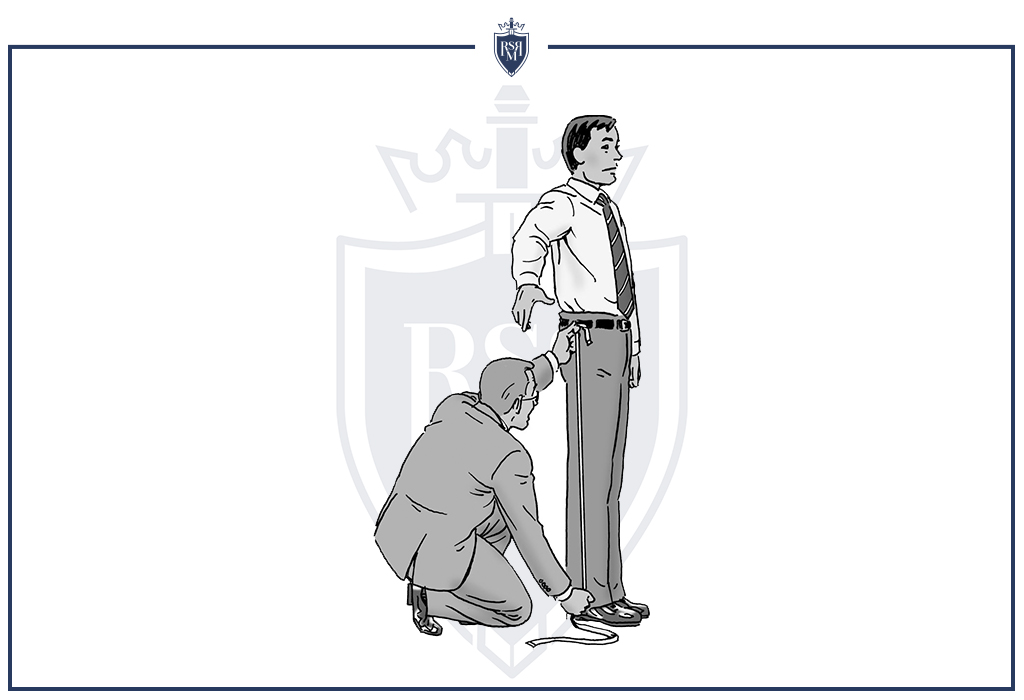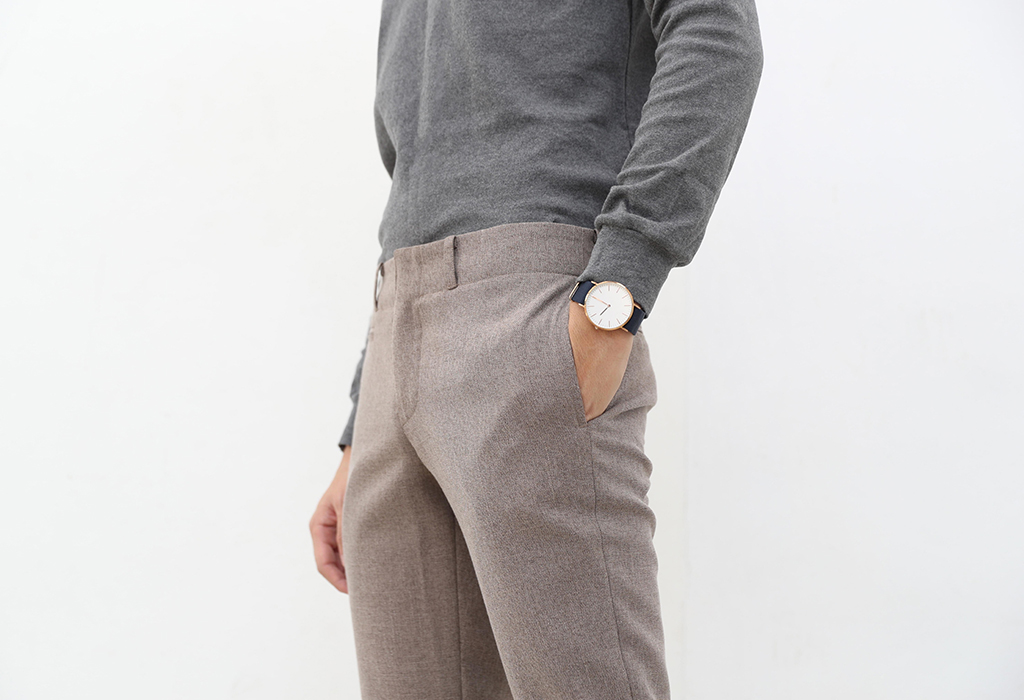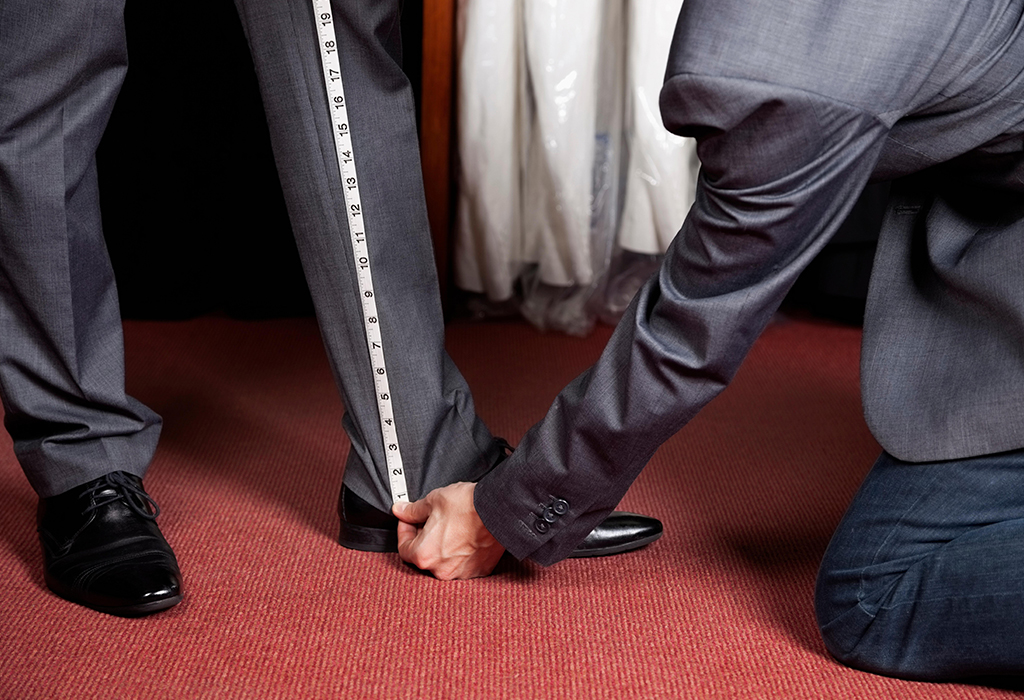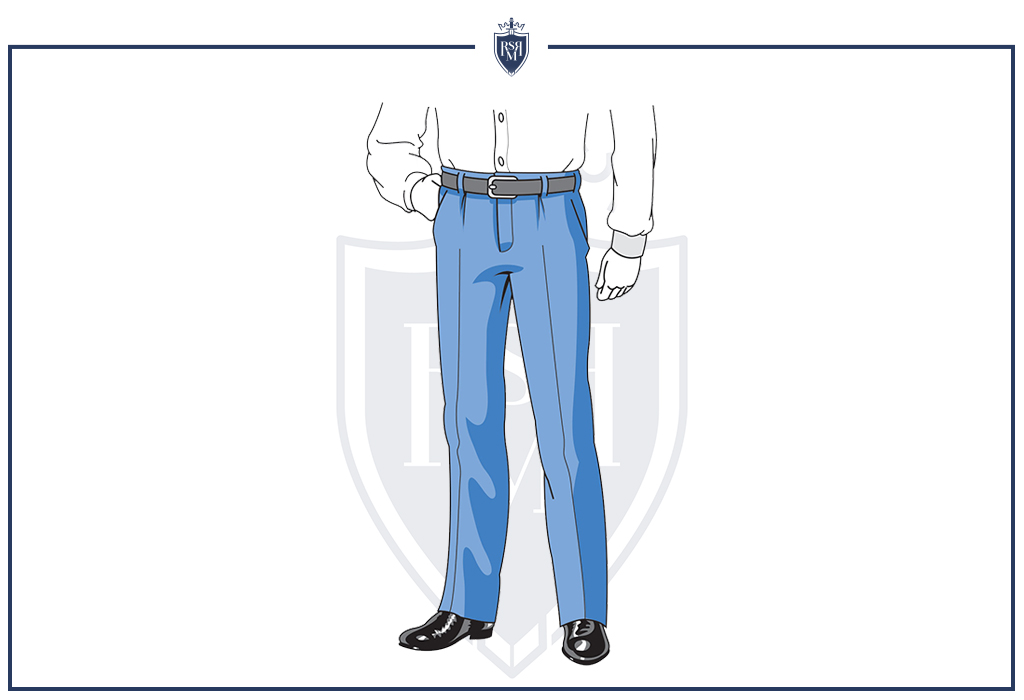How to Take Dress Pants in Several Sizes
Do you know your exact trouser measurement?
Finding the right fit for a pair of pants is tricky.
It is rare to receive a compliment on wearing trousers because they usually are not the focal point of dress attire.
Although wearing properly fitting pants is necessary for solid style, they will not and should not receive much notice.
Conversely, if the pair of pants is too short at the ankles, too tight on the hips, or too baggy altogether, suddenly pants become intensely noticeable.
This advice will address finding measurements for dress pants including pants for a complete suit, odd trousers or business-casual khakis, chinos, etc.
Finding Correct Trouser Measurements

Knowing individual measurements is mandatory when shopping for dress pants.
There are two main components to fit for slacks of all varieties: waist and inseam measurements.
Both measurements rely on personal attributes that change throughout a man's life; they must be taken more than once.
Most menswear stores will have a measuring strip on the ready, free to use for those unsure of their current waist length and inseam length.
These two measurements are the basics; details like cuffs, pleats and materials relate to these basic measurements.
Trousers Waist Measurement

Trousers should always be worn above the hipbones and at or below the naval. Though most men today do not wear dress pants at their natural waist, many tailors will take the measurement to find the waist length.
The natural waist can be considered as the horizontal line crossing through the naval; it is typically the smallest circumference measurement of the torso.
The waist band may sit below the natural waist, but try not to diminish the formality or line of an entire suit by wearing them too low.
Always keep in mind that dress shirts are tucked into the pant. This will automatically add about a quarter to half an inch to the waist length.
For men with a broad frame, wearing pants at the waist gives a slimming effect. Understandably, every man is not a size 32″ waist throughout his life, but some will manage to button the same old waistband wherever 32 inches still exist on his profile.
It pays to find right waist length, even if that means being fitted for a new pair of pants. If the waistband sits anywhere in the interval between the hipbones and at the naval and feels comfortable while sitting down, the waist length measurement is correct.
Taking Waist Measurements
Measurements can be prepared by the man himself if averse or unable to have done professionally. Access to a tailor's measuring tape is good, but this can be done with a string and a standard measuring tape.
To locate the waistline, tie a narrow string around the waist and let it settle into the natural waistline as you bend to the left and to the right.
Remember, the natural waistline or a few inches below are equally acceptable. Take the measurement along the string line. Always round to the next highest whole number because a little extra space will be necessary.
If the measurement lies on a discreet number, add another inch to the measurement to allow for a shirt to be tucked. So, the "skin-fit" measurement plus an inch will be most sufficient.
Trousers Inseam Measurement

In retail and bespoke tailoring, the inseam measurement is used when referring to the length of pants.
The inseam measurement is taken from the underside of the crotch (or top inseam point) to the bottom side of the ankle (bottom inseam point).
The outseam is taken from the top of the waist to the bottom of the leg and is generally not required to know when buying new pants.
When measured correctly, the inseam will allow the pants to fully cover the ankle. The correctly measured pant leg will allow a small gap between the bottom of the pants and the shoe as to not show socks.
Taking Inseam Measurements
Stand fully clothed, in a normal, comfortable position. Wear shoes with a standard heel or whatever shoe typically worn with dress slacks.
Measure the right leg from the top inseam point to the bottom side of the lowest inseam point. This is the time to make changes in the length.
As with waist length measurements, add another quarter to half an inch to the specific measurement.
This will allow for minor shrinkage that will inevitably happen at the dry cleaners. Write the measurement down. Repeat, using the left leg.
Measure carefully, as the length is not always the same in rare cases.
Rise Measurements
The rise is the length from the crotch seam to the top of the waist. Pants are sometimes sold in different rise measurements. While most retail stores sell only "regular" rise pants at about 10 inches, the tall gentleman standing at six feet tall or more should opt for long rise pants at about 12 inches.
When having a suit made, this definitely will be an option. Remember, even an expert tailor can not add to the rise of a pair of trousers. Make sure the rise measurement is as comfortable as possible when purchasing pants.
Conclusion To Finding Pants Measurements

Wearing properly fitted pants will make a big difference in the style of the whole ensemble, whether it be a suit or business casual. It pays to make sure every measurement is taken properly to ensure that the wearer not only looks stylish and comfortable, but feels stylish and comfortable. Men of any size or shape can wear any style of dress pants effortlessly if he gives attention to his specific clothing proportions.
Source: https://www.realmenrealstyle.com/dress-pants-finding-measurements/
Post a Comment for "How to Take Dress Pants in Several Sizes"